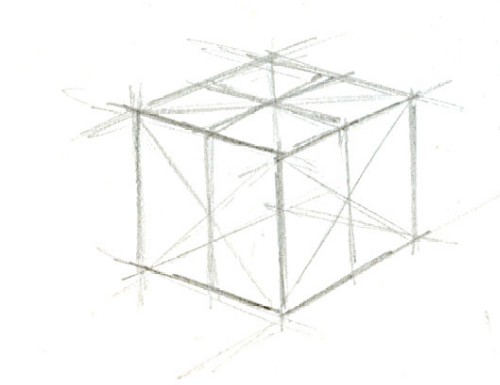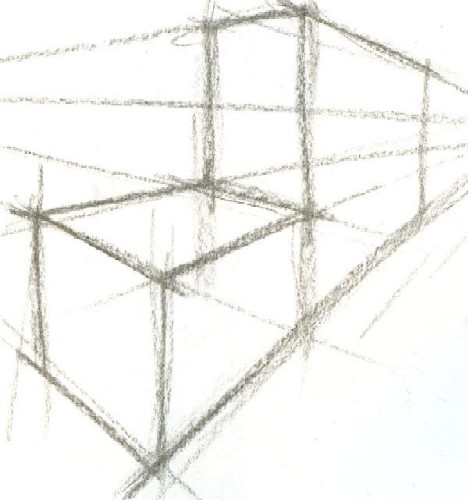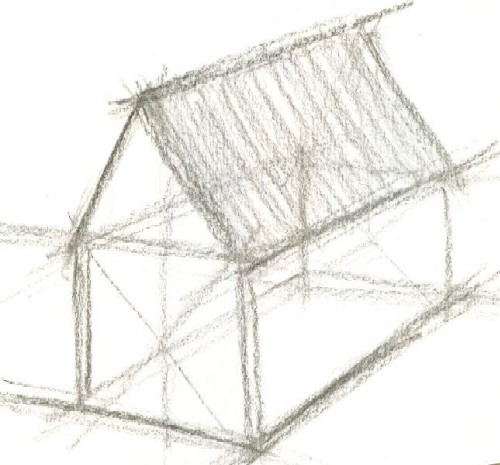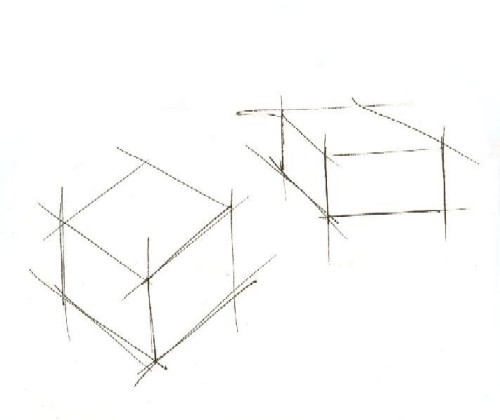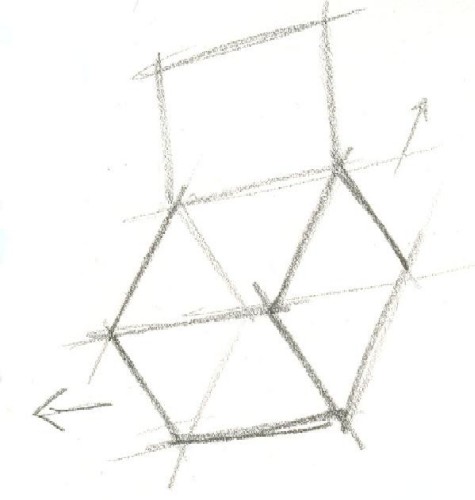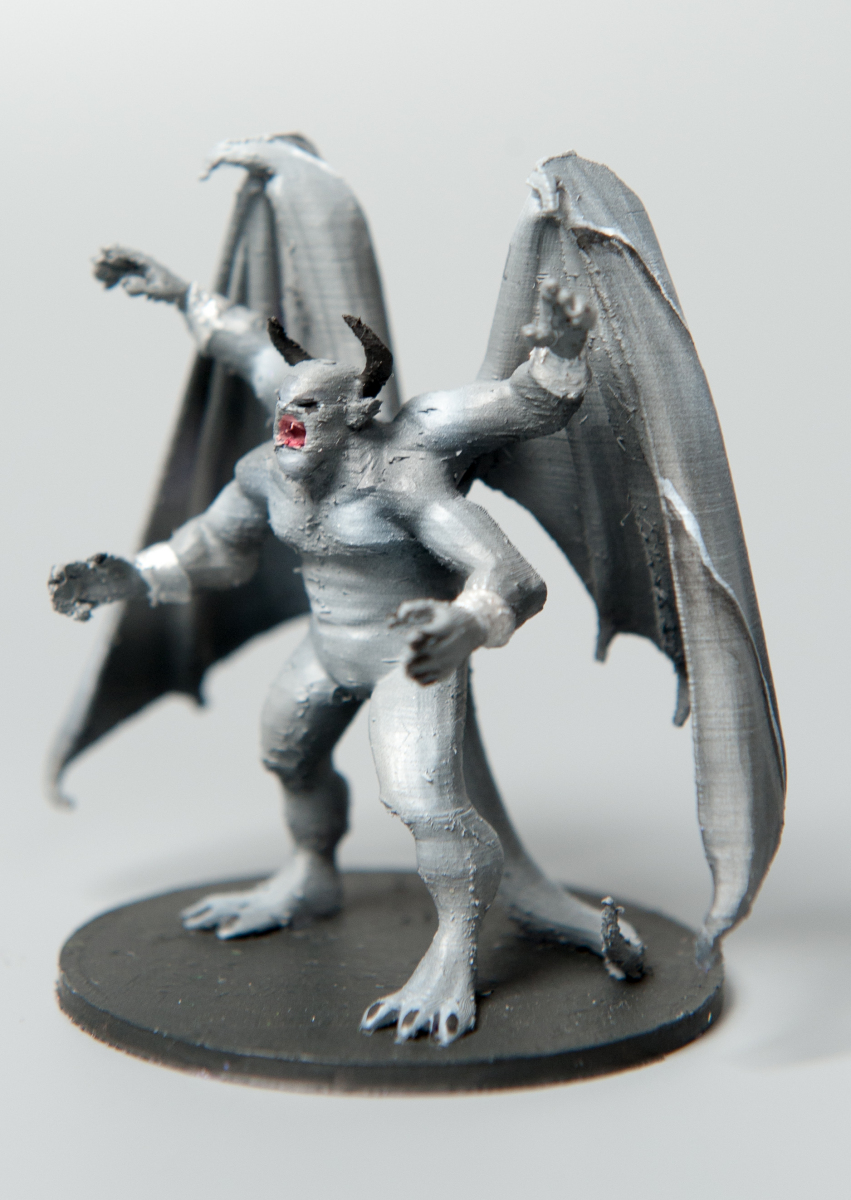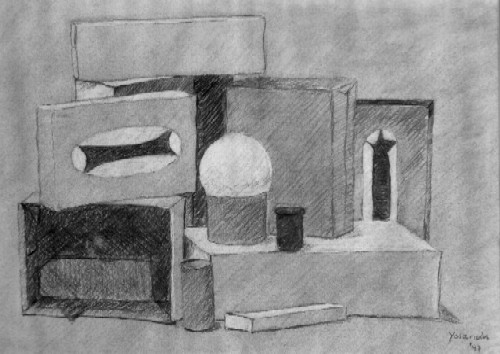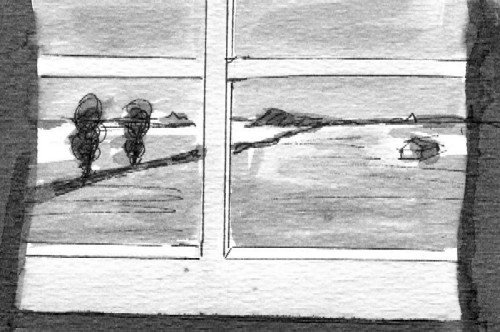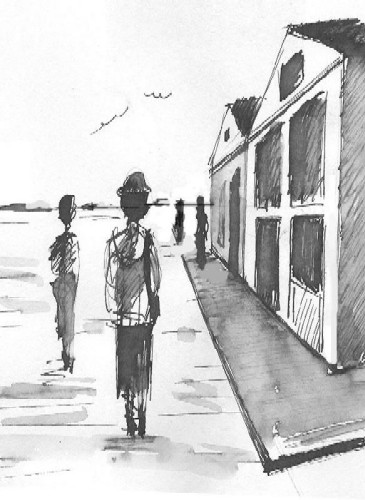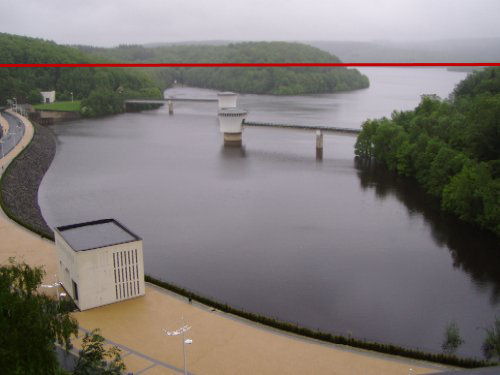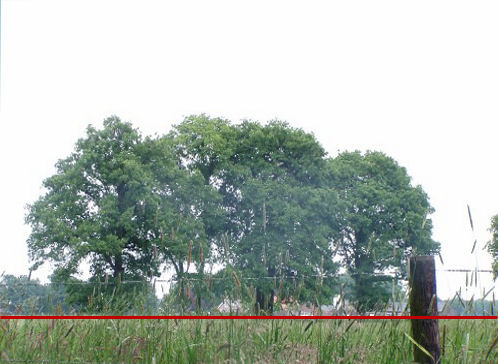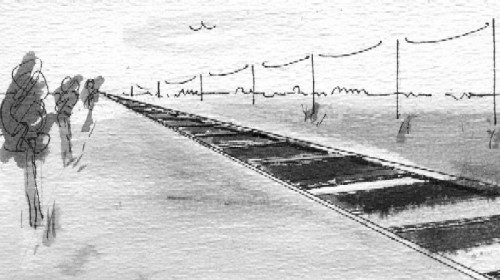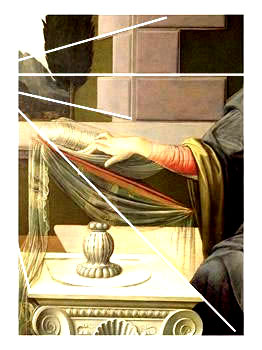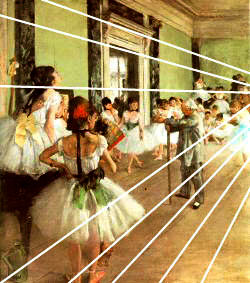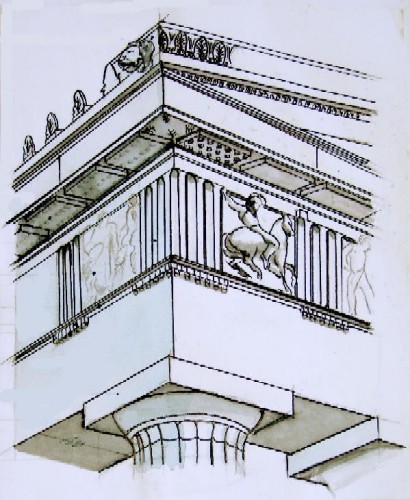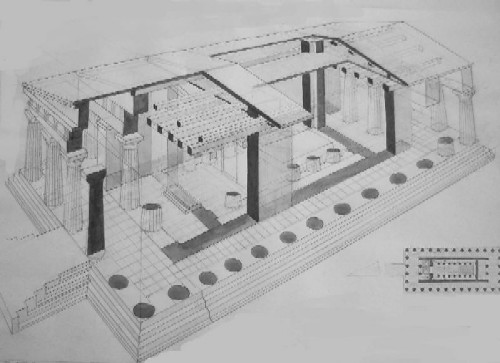Exploring space and everyday spatial objects by sketching them in a playful way is fun. It's also educational, especially when we look at how others, such as photographers and artists, deal with them. This first article explains some basic concepts.
Perspective
The subject often causes some anxiety for beginners. It's an unfamiliar, mathematically sounding theme. However, when one delves into it, it's a logical whole, and therefore, it makes sense to delve deeper into the matter.
|
The horizon
The line between the ground (or water) and the sky is called the horizon. It's an imaginary line that constantly shifts with us because the Earth is round, so we'll never truly approach the horizon.
The placement of the horizon is very important for the ultimate spatial image in a drawing.
How do you determine the horizon? If you stand by the window and can see far, for example, over farmland, the horizon is clearly visible and can be drawn on the window. In the city, you don't see the horizon because there are buildings in front of it, but it's still there; in that case, we refer to the horizon as an imaginary line.
|
The horizon is higher when you're standing than when you're sitting. So, the horizon is at eye level, literally at the height of our eyes. In the drawing of the street, you see the heads of the people on one line - one eye level.
|
| The bird in the sky has a high horizon; it has a broad overview of what's happening below; the frog on the ground has a low horizon, and its field of view is more limited. That's why we talk about bird's-eye view and frog's-eye view. The horizon as a horizontal line is often invisible or only partially visible. In the landscape, there are trees or mountains in front of it; in the city, there are houses. So, it's an imaginary line at everyone's eye level. |
Vanishing points
In perspective, when we stand directly in front of something, all horizontal lines remain horizontal and all vertical lines remain vertical. But the lines that recede from us - called converging lines - recede into the depth. The well-known example of railroad tracks illustrates this well. The two converging lines disappear into a central point on the horizon: the vanishing point. In this image, we are facing the railroad track where the rails remain horizontal and the posts and trees on the side remain vertical. The distances between the rails become smaller as they get further away; similarly, the posts and trees appear smaller as they get further away. An imaginary guideline can be drawn through the tops of the posts and trees; this line also disappears into the same vanishing point on the horizon. |
| If the person is not standing directly in front of the railroad tracks but more to the left or right, at an angle, then the perspective changes. The vertical lines always remain vertical, but the horizontal lines are now at an angle and will also recede into depth. This creates a second vanishing point on the horizon. It lies outside the paper. If it's drawn within it, it gives a very distorted image. |
| In interiors, guidelines for perspective can also be drawn, as seen in the paintings. Here, guidelines related to perspective are sketched. This can also be applied to photos. Sometimes, it opens up a whole new world, making you realize how space is organized and how objects find their place within it. |
Straight shapes: square and rectangle, cube and block
Straight shapes like a block, a cube, a house, an interior with doors and windows are called straight shapes, often built from squares or rectangles. In the sketches, you can see that guidelines have been used to draw the shapes accurately: midlines and diagonals. These guidelines are useful; they provide support when sketching. The materials for spatial sketching can vary from soft pencil to charcoal and ink. Guidelines are always drawn thinly and not erased. It's best to draw from the shoulder to be able to draw long loose lines. It's impossible to sketch long lines from the wrist. In the final drawing, lines in the foreground are made slightly heavier to suggest depth. The thin guidelines thereby almost disappear. |
